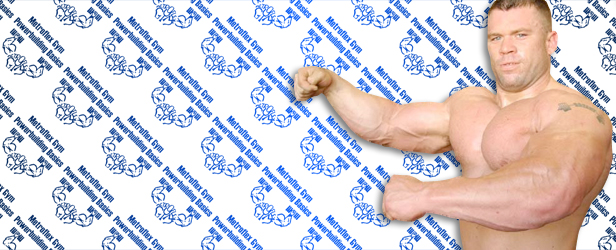
elitefts™ Sunday Edition
Prison yard politics to a sermon from the pulpit, big, strong traps scream power, and the best deadlifters in the world have herculean trap development. Olympic lifters rarely have sleeve busting biceps but sport big, beautiful traps like they're going out of style. Trap development in Strongmen competitors is off the charts. Farmer's walks and a plethora of pulling movements build big, strong traps. None of these athletes train specifically for physique enhancement, so common sense tells us that trap development plays a role in strength.
Some benefits of strong traps are:
- They keep the shoulder girdle in proper alignment.
- They're helpful for staying healthy in high contact sports like MMA, football, and boxing.
- Strong traps/upper back help a lifter maintain upright posture while squatting, which builds a nice rest spot for the squat bar.
- Strong traps are important for locking out deadlifts and any Olympic pulling exercises.
- Strong traps are necessary for keeping tight while bench pressing massive poundage. Powerlifters retract their shoulder blades when bench pressing, which is a function of the mid trap. Some top raw bench pressers even elevate the shoulder girdle, a function of the upper traps.
The bottom line is big, strong traps are a prerequisite for pulling big weights and building an intimidating physique. In street situations, big traps are much more intimidating than big biceps. Big traps scream functional power. They're ready to coil into combat ready weapons for battle.
So what movements are best for building strong traps? Power shrugs are my favorite, but let’s look at a couple unique shrug varieties:
- Dumbbell shrugs, 10-10-10 variation: These are performed by standing erect with one dumbbell in each hand and with the arms totally extended. First, do ten shrugs with the dumbbell on the right side. Next, do ten dumbbell shrugs with just the left side, holding the right dumbbell statically. Finally, do ten shrugs with both dumbbells.
- This is a great exercise for symmetrical trap development. It increases time under tension. I stole this one from Colonel Brian Dobson.
- Snatch grip shrugs: Paul Kelso, the shrug master, told me about these. They're done two different ways—in the bent over position or standing. In the bent over position, the contraction is to the middle of the back. When standing, there are two basic alternatives—shrugging to the rear (as in finishing a deadlift) or up toward the ears.
One of my favorite unconventional trap builders is heavy farmer's walks supersetted with heavy shrugs. The traps receive more than an isometric (static) contraction. They must dynamically stabilize the heavy weight of the farmer's walks and then be able to handle the heavy power barbell shrugs. Your traps are in for a thrashing and subsequent growth.
Here are two more of my favorite exercises for building strong traps:
- Seated row/scapular retraction shrugs: On a seated row, grasp the handles with a narrow grip and the arms extended. Retract your shoulder blades together. This will build the middle traps and give you a denser look. This is one of my favorite “prehabilitation movements” for big benchers.
- Bench shrug: I got this one from shrug expert Paul Kelso as well. Take the bench press position on the bench. Your hand spacing should be the same as you use regularly or perhaps a finger width or two closer. Lower the bar with straight arms by dropping the shoulders down toward the bench and crunching the shoulder blades together. Force the bar upward by spreading the shoulder blades to the side (like a lat spread) while raising the shoulders off the bench. Use pectoral contraction to roll the shoulders up and in toward the sternum. Keep the arms straight at all times during the movement. The bar will travel only three or four inches either way. This is a great way to add thickness to the mid traps and directly benefit your traps.










